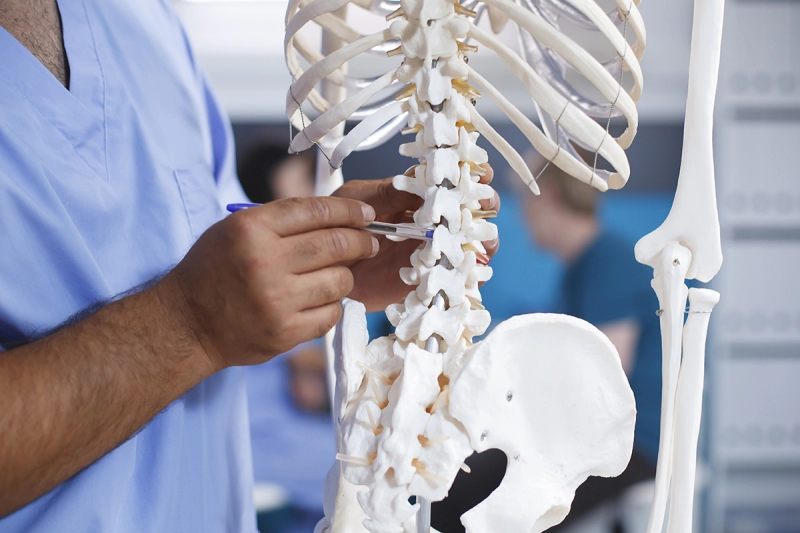

 Spinal Cord Stimulation: An Overview
Spinal Cord Stimulation: An Overview
Spinal Cord Stimulation (SCS) represents a cutting-edge medical treatment offering new hope for patients dealing with chronic pain conditions. This innovative therapy involves the delivery of low levels of electrical stimulation to the spinal cord, which can disrupt the pain signals traveling to the brain, resulting in pain relief.
Benefits of Spinal Cord Stimulation
The numerous advantages of SCS make it an appealing option for those with chronic pain. These benefits include:
Ideal Candidates for Spinal Cord Stimulation
SCS is not suitable for everyone experiencing pain. Ideal candidates usually include those with:
Spinal Cord Stimulation Procedure Details
The SCS procedure is relatively straightforward and involve two stages:
Electrode Placement
This can be done percutaneously (using a needle under x-rays or fluoroscopy guidance.) under local anesthesia, or through a surgical method under general anesthesia.
Percutaneous Spinal Cord Stimulation Electrode Placement:
Involves inserting leads through a needle into the epidural space of the spinal canal and positioning them using x-rays or fluoroscopy.
This procedure allows for the electrode to be performed while the patient is awake, specifically catering to individuals who have not previously undergone any surgery in the spinal area. This method, known as percutaneous spinal cord stimulation electrode placement, begins with the application of local anesthesia. Following this, the electrodes are carefully placed on the spinal cord with the assistance of a needle and guided by c-arm or fluoroscopy. During this awake procedure, test signals are emitted through the battery electrode connected to the spinal cord. This testing phase is crucial as it ensures whether the placement of the electrode effectively encompasses the area experiencing pain.
The precision allowed by this testing offers exceptionally accurate placement of the spinal cord electrode, maximizing the potential for pain relief.
Surgical Spinal Cord Stimulation Electrode Placement:
A small incision is made in the back, allowing access to the epidural space. The electrode array is then inserted and positioned with imaging guidance.
For patients who have previously undergone spine surgery, the percutaneous needle method of electrode placement for Spinal Cord Stimulation is not suitable. In such cases, the Spinal Cord Surgical electrode placement method is employed. This approach necessitates performing the procedure under general anesthesia, which entails making a skin incision and a small incision in the spine to access the epidural space for electrode placement. Since the patient is under general anesthesia, real-time evaluation of the test signals transmitted through the electrode is not possible. Therefore, the location for placing the electrode is determined based on the average findings of scientific data and research studies according to the patient's painful area. This methodology ensures a standardized approach to electrode placement, aiming to achieve optimal pain relief for the patient despite the inability to utilize direct feedback during the procedure.
Test Period in Spinal Cord Stimulation Procedure

Following both the percutaneous and surgical electrode placement methods in the Spinal Cord Stimulation (SCS) procedure, the patient enters into a critical test period. This phase involves connecting the existing electrode extension cable to an external battery, initiating a trial phase of up to 15 days. During this testing period, the patient's response to the SCS is closely monitored. If the patient experiences at least a 50% reduction in pain levels, the trial is deemed successful, and the decision is made to proceed with the permanent implantation of the SCS device. Conversely, if there is no significant reduction in pain during this trial period, it is concluded that the patient will not benefit from the Spinal Cord Stimulation surgery. Consequently, the entire system is removed. This test phase is a pivotal part of the SCS treatment process, ensuring that only patients who can significantly benefit from the treatment receive the permanent implant.
Pulse Generator (Battery) Implantation
This stage marks the final phase of the surgery. Regardless of the electrode placement method used (percutaneous or surgical), this phase is carried out under local anesthesia with the patient awake. A relatively brief procedure, it involves removing the extension cable and external battery, discarding them appropriately. The electrode, which has been placed on the spinal cord under sterile conditions, is then connected to a new battery. This battery is implanted under the skin. By the end of the procedure, no part of the system remains outside the body.
Decision-Making Process for Spinal Cord Stimulator (SCS) Treatment
The decision to proceed with Spinal Cord Stimulation (SCS) involves a comprehensive multidisciplinary approach. This crucial decision-making process is conducted by a committee comprising specialists in neurology, neurosurgery, algology (pain management), and physical therapy. The patient's condition is thoroughly evaluated by this team, particularly focusing on cases where medication has proven to be ineffective or has caused adverse side effects. It is in such scenarios that a patient may be considered for SCS treatment. This careful selection process ensures that Spinal Cord Stimulation is offered only to those who are most likely to benefit from it, following a holistic review of their health status and treatment history.
Patients considering SCS should engage in thorough discussions with their doctors about all potential risks and benefits, the specifics of pre- and post-operative care, and the expected outcomes of the procedure. With careful candidate selection and a properly implemented SCS system, patients can look forward to a significant enhancement in their quality of life.
last edited on 15.07.2024